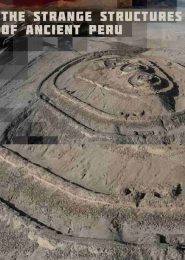Aztecs: Sacrifice And Science (2013)
The Aztecs, also known as the Mexica, were a remarkable Mesoamerican civilization that thrived between the 14th and 16th centuries. Their capital city, Tenochtitlan, stood on the site of present-day Mexico City. Despite their relatively short existence, the Aztecs left an indelible mark on history through their art, architecture, and religious practices.
Blood, Sacrifice, and Myth
At the heart of Aztec society lay a complex religious system intertwined with blood rituals. The Aztecs believed that the gods required sustenance in the form of human blood to maintain cosmic balance. Their pantheon included deities like Huitzilopochtli, the sun god, and Tlaloc, the rain god. To appease these powerful beings, the Aztecs conducted elaborate ceremonies involving human sacrifice.
The Great Templo Mayor
The Templo Mayor, a colossal pyramid in Tenochtitlan, served as the epicenter of Aztec religious life. Its twin shrines honored Huitzilopochtli and Tlaloc. Priests climbed its steep steps, carrying out rituals that involved cutting the hearts out of sacrificial victims. The blood flowed down the temple’s steps, symbolizing the life force connecting the earthly and divine realms.
Science Amidst Sacrifice
Contrary to popular misconceptions, the Aztecs were not solely obsessed with bloodshed. They were also skilled astronomers, architects, and herbalists. Their advanced knowledge of medicine, including the use of plants for healing, demonstrates their scientific acumen. The Aztecs understood the medicinal properties of various herbs and utilized them effectively.
The Role of Sacrifice
Sacrifice was more than a gruesome spectacle; it was a cosmic duty. The Aztecs believed that their sacrifices sustained the universe, ensuring the sun’s daily rebirth and the continuity of life. The victims, often prisoners of war or slaves, willingly participated, viewing their deaths as an honor. The Aztec worldview revolved around cycles of creation, destruction, and renewal.
Unraveling the Myths
Centuries of myth-making and sensationalism have obscured the true nature of Aztec rituals. Documentaries like Aztecs: Sacrifice And Science aim to dispel these myths, presenting a balanced view of this enigmatic civilization. By combining archaeological evidence, historical accounts, and scientific analysis, the film provides a nuanced understanding of the Aztecs’ multifaceted existence.
In conclusion, the Aztecs’ legacy is one of paradoxes: a civilization steeped in blood rituals yet capable of scientific inquiry. Their story serves as a reminder that human societies are rarely monolithic; they encompass both darkness and enlightenment. As we explore their past, we unravel the intricate tapestry of Aztec life, where sacrifice and science coexisted in a delicate dance between the mortal and the divine.




